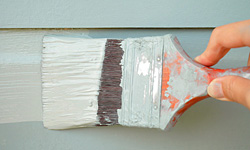Graphene-Based Paint July 2017
Want more free featured content?
Subscribe to Insights in Brief

Recently, Spanish paint manufacturer Graphenstone awarded exclusive distribution rights to The Graphene Company to sell its paint throughout the United Kingdom. Graphenstone's paint incorporates graphene fibers in an active lime base. The manufacturer claims that it produces the most environmentally friendly paint in the world.
When the graphene-infused paint dries, the calcium hydroxide in the lime base cures and absorbs carbon dioxide from the surrounding air to form calcium carbonate—thus purifying the air. Another environmental benefit of the paint is that it does not release any harmful volatile organic compounds during the curing process. In addition, the paint offers long-term durability, good breathability, and antibacterial and odor deterring properties.
The inclusion of graphene fibers in the paint not only provides the paint with strength but also confers superconductivity that helps to thermally regulate the temperature of buildings. For example, Graphenstone-painted walls can distribute heat across a painted surface, providing benefits both in the winter months—by reducing heat conduction out of the room—and in the summer months—by reducing heat conduction into the room.
Implications
Lime-based paints have been available for many years, but graphene-infused lime paints are fairly new. Graphenstone first launched its graphene-infused paint in 2014, and the paint now finds use in hospitals, schools, and hotels. The Graphene Company plans to market the paints for similar applications in the United Kingdom. And because Graphenstone is the first to release graphene-infused commercial paint into the UK market, it will likely gain a first-mover advantage over other companies that are developing graphene-infused and nanomaterial-based paints.
Impacts/Disruptions
Currently, the marine industry is driving research developments of graphene-infused paints. In this industry, such paint can provide marine infrastructure with rust-free and anticorrosion properties. For example, Applied Graphene Materials is collaborating with US paint manufacturer Sherwin-Williams Protective & Marine Coatings to develop graphene-infused anticorrosion paints that also help to increase the lubricity of boat surfaces. In addition, Chinese company Sixth Element Materials Technology offers competitively priced graphene and zinc-infused paints for use as anticorrosion primers on offshore wind-turbine towers.
Graphenstone's graphene-infused paint provides yet another example of an application of graphene. Graphene-infused paint can provide commercial paints with added functionality, improved coverage, and enhanced environmental credentials. However, these benefits will likely come at a cost, and until prices fall the paint will likely serve only niche commercial spaces and marine infrastructure rather than homes and mainstream commercial buildings.